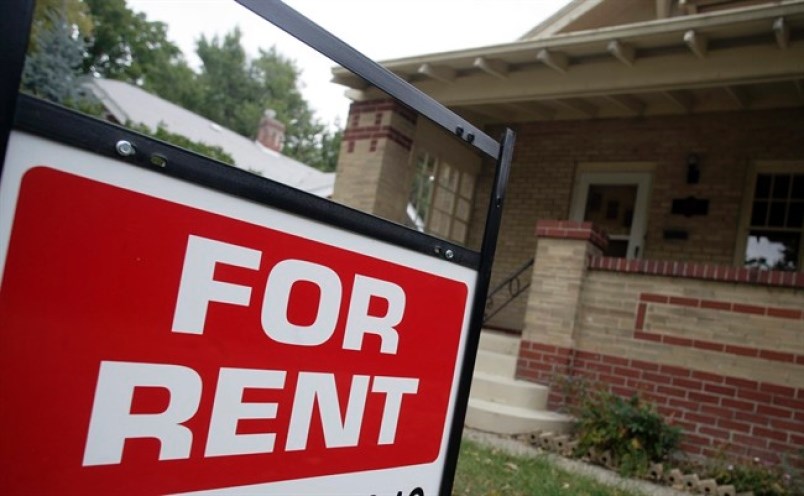Ashley is a single, 30-something with no dependents who has been working in the Town of the Blue Mountains (TBM) for the past five years. She says finding safe, affordable housing in the municipality has been overwhelming and has left her feeling hopeless.
“This was the place where I wanted to grow old. I fell in love with it. I've been really involved in the community. I've been volunteering. I just love it here,” she said.
“But, at this point, with the prices being as high as they are, ownership being so out of reach and the influx of people coming in, I just feel, maybe I should move a little farther north so that I can afford a nice home,” she continued.
Ashely, who’s name has been changed to protect her privacy, has been actively working in the municipality for the past five years. For the first two years, she lived in Meaford, commuting to work everyday, until she eventually found a place to rent in Thornbury.
She describes her housing search in TBM as daunting and highly competitive.
“I had signed up for online notifications for rentals in the area,” she explained. “I received the email first thing in the morning. The ad hadn't been listed for two hours and it already had 250 views. That's when I realized that it was going to take a lot more effort to be able to find a place to live, especially on a single income.”
She says, in her experience, a lot of properties in the area are being bought for profit because it is a “hot market”.
“My former landlord sold that property to another company – two owners from Toronto – and they set the rental price up an extra $600 a month,” she says of her former residence where she had been paying $900 a month.
“These properties are going up like stocks. Essentially, people are just buying them for investment purposes only and nobody's living in them. It's made everything completely out of reach,” she said, adding that she feels TBM’s reliance on outside traffic to come in and help the community, versus the community helping the community, is not sustainable.
“When the shoulder seasons hit, who's going to be there to serve your food, entertain you, clean your ski chalet? Those things that make the community so great and that's what people love about it. But, there needs to be an understanding that the people who are in this income bracket, can't afford to live here,” she said.
She recently expressed interest in being a potential tenant of the Blue Mountains Attainable Housing Corporation.
“I think it'll be a stepping stone, at the very least,” she said. “You can't save up for a down payment when you're putting all of your money into the roof over your head. You can't move forward.”
Rob Sampson, chair of the BMAHC, says Ashley is a perfect example of who the corporation is looking to attract to its attainable housing projects.
“This is not social housing. These applicants are people who have a good job and a good income. They work in the community but are being priced out of the local housing market,” Sampson said.
He adds that TBM currently has no entry-level housing in the area and that rental prices have skyrocketed in recent years.
“Rent is way out of whack here because it's trying to keep pace with the property values,” he said.
Ashley says she is excited about the BMAHC and its projects, but also points out that the corporation's recently-defined eligibility criteria might be missing the mark and could be leaving some people out, including herself.
“As a person living on a single income, I can't meet a lot of the criteria. My particular situation is that I can't work the way that I did before because of health concerns,” she said. “This criteria may require people to double-up to be able to meet the household income requirements.”
The BMAHC’s eligibility criteria requires applicants to have an annual gross income of $40,000 to $100,000, and be employed in TBM for an average of at least 30 hours per week.
Sharon McCormick, executive director of the BMAHC explains that the required annual income is based on the town’s current median income.
“Right now, the median income for the town is $70,000. Our policy is based on 50 to 130 per cent of median income,” said Sharon McCormick, executive director for BMAHC.
However, Ashley says between the availability of work in the area and the rate of pay, that income bracket may not be achievable to some individuals the corporation is trying to attract.
“There are some things that need to be hashed out a little bit to make this program work a bit better, in my opinion,” she said. “But, I think that comes with the territory. This is something brand new.”
Regardless of her personal qualifications, Ashely says she is in full support of BMAHC and its efforts to bring attainable housing to the community.
She recently registered for the Gateway site project and hopes to work with the BMAHC board to help paint a more accurate picture of the housing situation that many in the community are facing.
“This is an absolute necessity for TBM. I don't need a mansion. I just want a safe home somewhere with a little bit of privacy and that's it,” she said. “It's a very simple life and if that can't be achieved, then what are we doing here? How are we really helping the community if even the simplest form of living can't be supported?”



